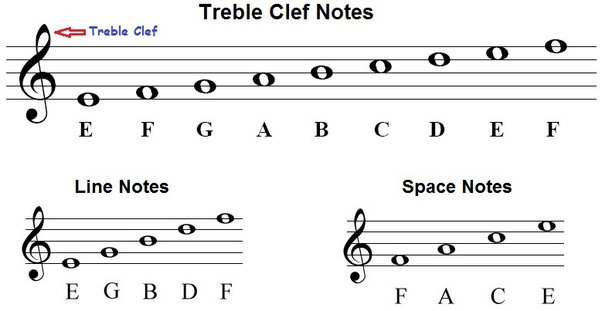The treble clef, often known as the G clef, is an important symbol in music notation that denotes the pitch of recorded notes. It is especially important for those learning to read music or transitioning from bass clef to treble clef. This article will serve as a guide to understanding the basics of the treble clef, including its role in the G major scale.
What is the Treble Clef?
One of the most well-known symbols in music notation is the treble clef. Its primary role is to identify the second line from the bottom of the staff as the note G above middle C. This clef is used for high-pitched instruments such as the violin, flute, and trumpet, as well as the higher notes on the piano and keyboard.
The G Major Scale in Treble Clef
The G major scale is a great starting point for learning music theory in treble clef. Consisting of seven notes—G, A, B, C, D, E, and F#—it follows the pattern of one sharp, F#. When learning or teaching the G major scale in treble clef, it’s important to familiarize oneself with the placement of each note on the staff.
Reading Music in Treble Clef
Reading music involves more than just knowing the names of the notes. It’s about understanding their rhythmic value, how they interact with each other, and how they correspond to the instrument you’re playing. Here’s a basic breakdown of the lines and spaces in the treble clef:
Lines and Spaces
Every line and space on the staff represents a particular note in music. In the treble clef, from bottom to top, the lines represent E, G, B, D, and F, which can be remembered by the mnemonic “Every Good Boy Does Fine.” The spaces, on the other hand, spell out the word “FACE,” representing the notes F, A, C, and E.
Transitioning from Bass Clef to Treble Clef
It can be difficult for musicians who are used to reading in bass clef to adapt to treble clef. Here are some pointers to facilitate a more seamless transition:
Tips for Transition
- Practice regularly: Consistent practice will help you become more comfortable with the treble clef.
- Use mnemonics: Remember the lines and spaces using mnemonics like those mentioned above.
- Transpose music: Take a piece you’re familiar with in bass clef and rewrite it in treble clef.
- Learn the intervals: Understanding the intervals between notes can help you read music more intuitively.
Conclusion
The treble clef is a fundamental component of music notation for high-pitched instruments and voices. By mastering the G major scale in treble clef, and learning to read the lines and spaces, musicians can expand their repertoire and fluency in reading music. Transitioning from bass clef to treble clef takes time and practice, but with patience and dedication, it can open up a whole new world of musical possibilities.
Whether you’re a beginner or an experienced musician, a solid understanding of the treble clef is invaluable. Embrace the challenge, and let your musical journey continue to flourish.
Read Also:

